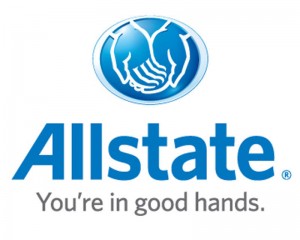Allstate first disclosed its Transformative Growth Plan in December, an effort to overhaul how it does business, boost efficiency and reduce expenses. During the Illinois-based property/casualty insurer’s Q4 2019 call with analysts, Allstate Chairman, President and CEO Thomas Wilson and his team attempted to put the plan in greater context and flesh out some of the details.
 One of the many changes: How agents earn commissions.
One of the many changes: How agents earn commissions.
According to Wilson, that and other revamps on the way reflect, in part, an unhappiness about how Allstate is performing compared to its biggest rivals, despite an overall solid performance.
“We’re growing, but GEICO and Progressive are growing auto insurance market share faster, through massive advertising spending and low-cost structures,” Wilson stated plainly at the start of the call.
Results
Allstate concluded 2019 with generally good results. The insurer produced $1.7 billion in net income in the 2019 fourth quarter, or $5.23 per diluted common share. That compares to a $585 million loss in the 2018 fourth quarter (due in part to California wildfire losses), or negative $1.71 per diluted common share. For all of 2019, Allstate reported nearly $4.7 billion in net income, versus $2 billion in net income during 2018.
Allstate said it enjoyed a 5.4 percent increase in property liability insurance premiums during Q4 2019 compared to the previous year, though net investment income dipped 12.3 percent.
Allstate brand auto insurance net written premium grew 3.8 percent during Q4 2019 versus Q4 2018, and policies in force jumped 1.5 percent year-over-year for the quarter. As well, Allstate brand homeowners insurance net written premium grew 4.7 percent compared to the 2018 fourth quarter.

Similarly, the company’s Esurance brand saw net written premium grow 2.5 percent and policies in force jump 2.3 percent during Q4 compared to the previous year. But Encompass saw net written premium dip nearly 3 percent in the 2019 fourth quarter, because of a decline in policies.
Combined ratios for Allstate’s various brands in Q4 2019 were mostly good, except for the money-losing Esurance brand. The overall recorded combined ratio was 88.7, versus 96.6 in Q4 2018. Allstate’s auto combined ratio was 92.8, and its homeowners brand was 74.3, with the former about static over the previous year, and the latter a large improvement over its money-losing 2018 fourth quarter. Encompass booked a 93.3 combined ratio in Q4, with significant improvement over its 2018 fourth quarter performance.
Allstate’s perpetually struggling Esurance brand reported a 107 combined ratio in the 2019 fourth quarter, compared to 101.8 the previous year.
Agents, Commissions, Cost Cutting and More
The Transformative Growth Plan, as announced fully in in December, involves phasing out the Esurance brand through 2020 and using its platform as another way to sell Allstate products. Esurance allowed customers to buy their auto, home, motorcycle and renters insurance online in a direct sales way, but Allstate-branded property-liability products are typically sold through agencies, call centers and online (while internal business rules limit choice). The insurer also expects to combine its Allstate, Esurance, Encompass and Answer Financial Groups into one business.
The broad idea, Allstate has said, is to lower costs, support more competitive price without reducing margins and free up funds for more marketing.
During the investor call, Wilson continued his sales pitch for the massive, multi-year effort to revamp how Allstate does business and boost efficiency in the process.
“The plan builds on our strengths,” he said. “Our plan recognizes that customer needs are changing, due to increased connectivity and advanced analytics. Our leading positions in telematics and digital auto collision estimates are two examples of how we are embracing these changes.”
He also noted, again, that most Allstate customers still prefer agents – “we hope an Allstate insurance agent when purchasing a policy – but are comfortable with self-service.”
Wilson said that the company’s telematics and digital auto collision estimate technology has already helped propel it forward, and pointed out that more mobile applications and technology service enhancements are coming. He said the Transformative Growth Plan is now accelerating the process with the goal of expanding customer access capabilities, lowering expenses and redesigning property liability products, and investments in technology and marketing.
Esurance’s conversion to a platform that sells Allstate branded products is something that Wilson said will be valuable, because “Esurance has strong direct capabilities having more than doubled in size since it was acquired a little over eight years ago.” As well, Esurance advertising spend will be shifted to help reposition the Allstate brand for more tech-savvy customers.
 Independent agents will also be given more resources, he said, by merging the Allstate independent agent offering into Encompass to help boost its market share and make it a stronger competitor.
Independent agents will also be given more resources, he said, by merging the Allstate independent agent offering into Encompass to help boost its market share and make it a stronger competitor.
Agents will also see a change in how they’re compensated. As Glen Shapiro, president of Allstate Personal Lines explained, some of the variable compensation used for agent renewals has been moved to new business, in a bid to incentivize growth.
When asked how agents are responding to the growth plan changes, Shapiro said that a marketing boost is “wildly popular” and that agencies who are growing fast and are built for expansion appreciate the commission change.
Other agencies “not built to grow” are either “excited about retooling their business” or not ready yet to retool, he said.
He added that agents embracing the new commission structure and other changes “are growing faster than folks that are not.”
Argued Wilson: “Agents are part of our team. We want them to be successful. We are leaning in hard to make them successful. They drive a bunch of our business and we’re going to work hard on making [this] successful.”
While Allstate has not released specific details, cost cutting appears likely.
“Reducing expenses across the board is part of the plan,” Wilson said. “We expect early in the plan that expense reductions will play a significant role in us improving our affordability for customers, and getting to that second part of improving value propositions.”
Many Years
Wilson emphasized that the plan will “take us multiple years to do.” While expense reductions and more marketing will come first, the next step would be redesigning Allstate’s property/liability products with innovative ideas, along with an investment in new technology that improves product management and customer experience.
Wilson said the insurer will be able to cut expenses and reduce its overall expense load while investing in technology and platforms that help enable redesigned products. The tech portion, he said, would take some time to implement.
In the end, Wilson said, Allstate wants to give customers multiple ways to buy its signature products, and the company’s Transformative Growth Plan will eventually help it get there.
“This is not an “or” conversation. It is an “and” [conversation],” he said. “We want to sell as much as we can to as many people as we can, using as many ways as we can.”





















 Artificial Intelligence Is Rewriting the Rules for Commercial Lines
Artificial Intelligence Is Rewriting the Rules for Commercial Lines  Good Times for U.S. P/C Insurers May Not Last; Auto Challenges Ahead
Good Times for U.S. P/C Insurers May Not Last; Auto Challenges Ahead  Is the AI Boom a Bubble Waiting to Pop? Here’s What History Says
Is the AI Boom a Bubble Waiting to Pop? Here’s What History Says  Breaking: Andersen to Replace Zaffino as CEO of AIG on June 1
Breaking: Andersen to Replace Zaffino as CEO of AIG on June 1 











